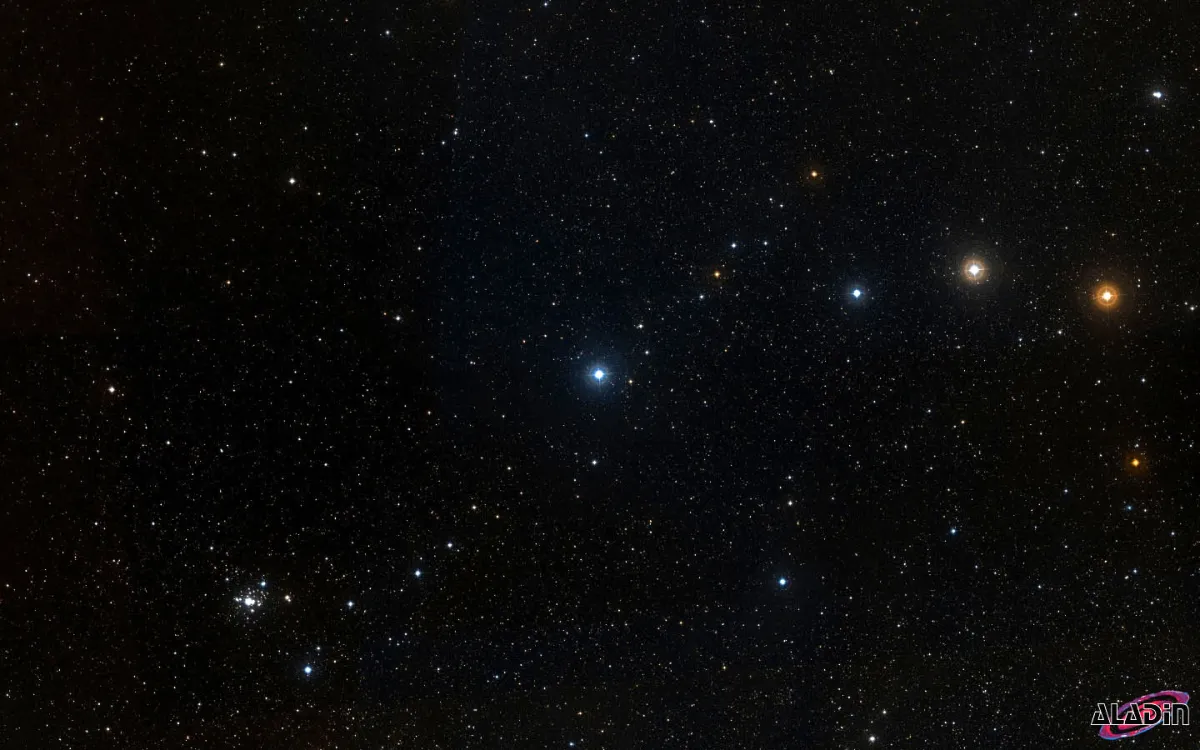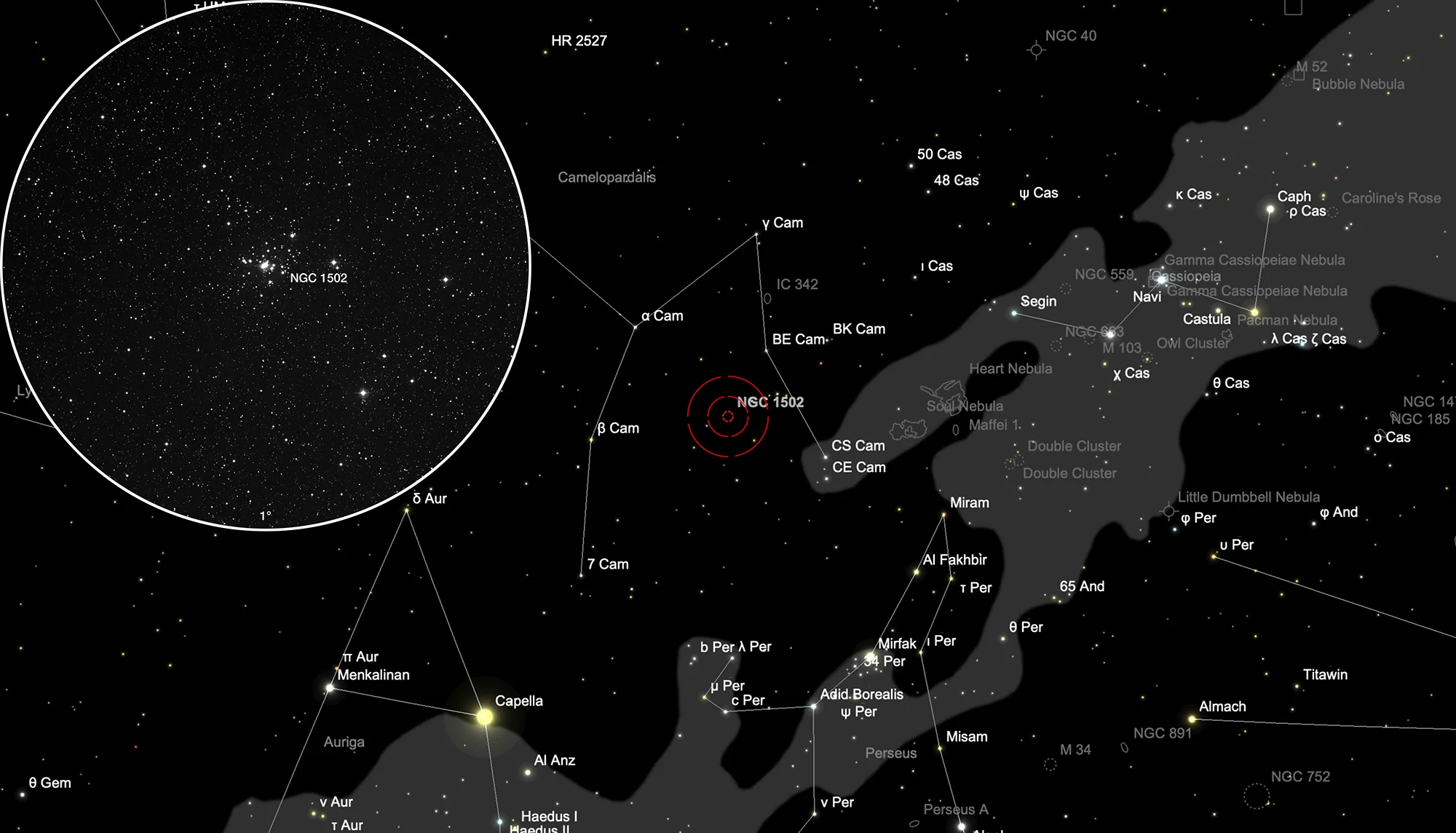Cluster NGC 1502 & Kembles Cascade

History
The open cluster was discovered on 3 November 1787 by William Herschel using his 18.7 inch reflecting telescope. He cataloged it as VII 47 and noted: «A cluster of stars, pretty rich and considerably compressed, little extended 3 or 4' diameter, of irregular figure.» [464] John L. E. Dreyer cataloged the cluster in 1888 as NGC 1502. [313]
The 2° long star chain «Kemble's Cascade» received its name from the American amateur astronomer Walter Scott Houston. He was the author of the column «Deep-Sky Wonders» in the magazine «Sky & Telescope» from 1946 to 1993 and received a letter from the Canadian Franciscan friar Lucian J. Kemble in which he reported how he discovered a «cascade of faint stars beautiful from the northwest on the open star cluster» with 7x35 binoculars. Housten was so impressed by it that he described the star chain in his 1980 column and named it «Kemble's Cascade» in his honour. [576]
Physical Properties
NGC 1502 is a moderately reddened open cluster located at the periphery of the Cam OB1 association and probably within the Orion Spur, with published distance estimates varying between 0.7 and 1.5 kpc. It is a very young cluster, with an almost vertical main sequence. It could be an example of a disrupting or expanding unstable cluster, with a large size and a small core. The cluster contains the earlytype eclipsing binary SZ Cam (HD 25638), which is one of the components of the visual double star representing the brightest members of the cluster. [577]
Kemble's cascade is an apparent line of more than 20 coloured stars from the fifth to the tenth magnitude class, extending over an angular distance of about 2° towards the northwest.
| Designation | NGC 1502 |
| Type | OCL (II3p) |
| Right Ascension (J2000.0) | 04h 07m 49.2s |
| Declination (J2000.0) | +62° 19' 54" |
| Diameter | 20 arcmin |
| Visual magnitude | 6.9 mag |
| Metric Distance | 0.821 kpc |
| Dreyer Description | Cl, pRi, cC, iF |
| Identification, Remarks | WH VII 47; GC 802; OCL 383 |
Finder Chart
The open star cluster NGC 1502 lies at the south-eastern end of the 2° long star chain «Kembles Cascade» in the constellation Camelopardalis. The best time to observe it is from July to April, when the circumpolar constellation is at its highest in the sky.
